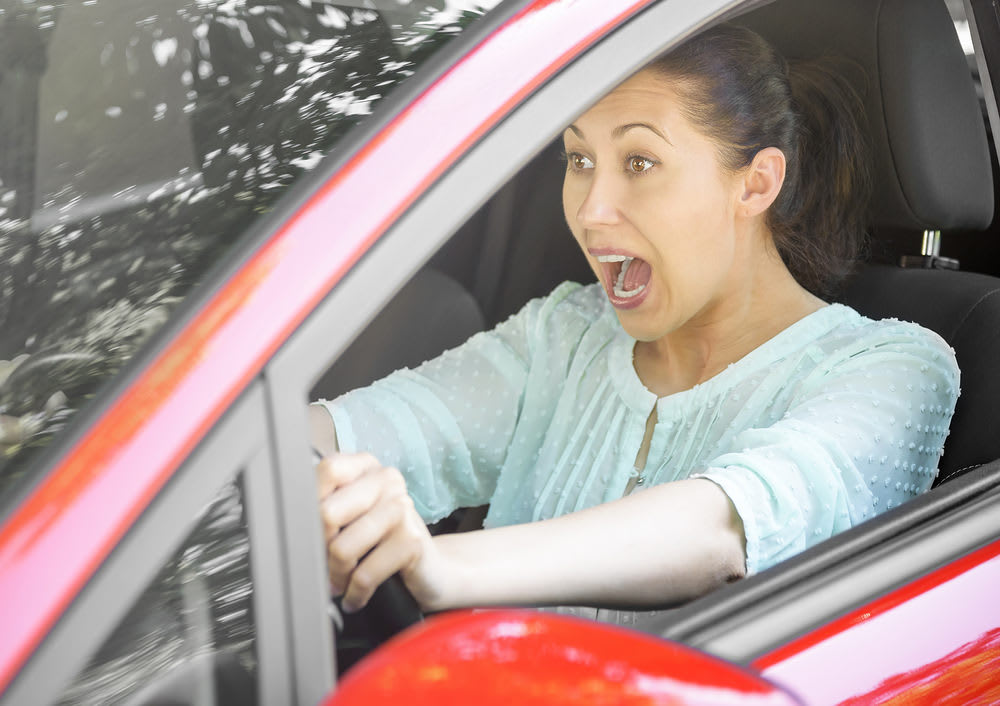

Brake failure is terrifying and most motorists consider it to be a worst-case scenario. Here are a few things to keep in mind in case you find yourself in such a situation.
-
Awareness of your surroundings is key. Relax and focus on paying attention to the road while assessing the situation. A few things to observe:
- Did the brake pedal go down when pushed?
- What are the surroundings like?
- What speed is the vehicle going?
-
If the brake pedal went down when pushed, then keep the pedal depressed and wait for some result. There is a good chance that keeping the brake pushed all the way down will slow the vehicle, maybe even to a complete stop. If there a problem with a component of the brake system like the master cylinder or one of the lines, then there is probably some pressure still in the system, even if there is less than an optimal amount.
- Note: If your vehicle has ABS, then keep the pedal pushed hard to the floor and find a safe place to stop. If your vehicle does not have ABS, then pump the brakes with varying amounts of pressure when the brakes activate so as to not have the wheels lock up.
If the brake pedal does not go down when pushed, then there is probably something lodged behind the brake pedal. Full cans of soda are very good at this, as they can roll into tight spaces easily and are near impossible to crush when sealed. Keeping your eyes on the road, pull into the least populated lane of traffic and try to get your toes into the space behind the brake pedal from the side. This motion should dislodge whatever may be stuck behind the pedal. Afterwards, find a good place to pull over and remove any garbage from the floor of the car.
-
If neither of the above solutions remedy the issue, then the first priority is to reduce speed. As soon as the brakes first fail to work, all acceleration must stop unless required to avoid an accident. Speed reduces the number of viable solutions to stop the vehicle the higher it gets.
- In a car with a manual transmission, downshift when the revs are low enough and let the transmission do the braking. Be extra cautious of vehicle approaching from the rear, as this type of braking does not activate the brake lights. Once in first gear, find a good place to pull off the road and come to a complete stop by gently applying the emergency brake. Pumping the emergency brake can keep the wheels from locking up as well.
- In a car with an automatic transmission, shift into a lower gear below drive (“D”), usually numbered “3,” “2,” and “1.” This is slightly less effective than with a manual transmission, but the core concept is the same. Once the revs go down to a safe level, shift down to “2.” Once the vehicle has slowed significantly, shift into “1” and either gently apply or pump the emergency brake when there is a safe place to pull off of the road.
-
As mentioned above, the emergency brake can be a huge help in this situation. That said, it can also make the rear wheels lock up and cause the vehicle to veer unpredictably. Hold down the button on top of the Emergency Brake lever whenever using it in this type of application. Apply the brake slowly and pump it slightly when the braking starts. If the vehicle has a foot pedal for the emergency brake, then proceed with extreme caution. This type of brake is very prone to locking up.
- The emergency brake should only ever be used for braking in an emergency. It is not designed to make the whole vehicle come to a stop from high speed. While it is better than nothing, it can cause as much trouble as any malfunction if used incorrectly.
If all of the above methods were ineffective, then it is time to assess the surroundings for an emergency stop. Ideally, letting the car coast to a stop and pulling over is optimal. In many situations, though, this is impossible. To avoid a serious wreck with another vehicle, look for grass or other soft turf on the side of the road. Flat land is better than a hill as well. Avoid rivers, lakes, cliffs, large rocks, or steep hills. Some highways on large hills (the worst place to lose brake pressure) will have “runaway truck lanes” that can be used to stop in an absolute emergency life-or-death situation. These should really only be used by trucks, but if the alternative is a wreck, than any viable solution is a better solution.
Keeping the floor of your car clean and doing routine brake system maintenance can prevent almost all brake failures, so never neglect the safety-oriented parts of your car.



